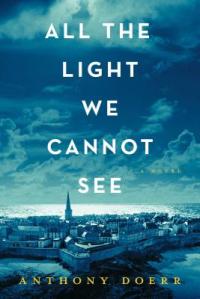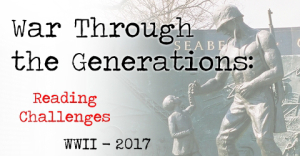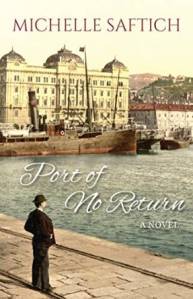
Source: Purchased
Rating: ★★★★☆
But I do know there is no justification. No possible rationalization for what the Nazis did, for what civilian Germans permitted and encouraged to happen.
And yet: you. Here you are. You have the temerity to sit in my home, at my table, with your lights and your cameras and your questions and your historical credentials. You dare to seek some explanation. You dare to record the stories of the butchers and those who abetted them. You dare to seek some exoneration of a people who committed wholesale slaughter of an entire race!
(from Those Who Save Us)
Jenna Blum’s Those Who Save Us focuses on a broken relationship between a mother and daughter who lived in Weimar during World War II. The book centers on Anna Schlemmer, who has spent 50 years in silence about her wartime experiences. Her daughter, Trudy, who was just a baby during the war, remembers only bits and pieces of her life then.
The novel opens upon the death of Anna’s husband, Jack, the American soldier who married Anna shortly after the war and brought her and Trudy to Minnesota. Trudy, a professor of German history, does her duty in caring for her mother, but the distance between them is palpable. Her unanswered questions and desire to understand her mother’s wartime choices prompt her to take on a project in which she interviews Germans about their experiences during the war, including how they survived and what they knew about the Nazi atrocities.
Trudy has long been haunted by a photograph she found in her mother’s drawer as a child: what looks to be a family photo of Anna, Trudy, and an SS officer. The truth behind the photo is revealed over the course of the novel, which shifts back and forth between Anna’s wartime story and 1997 as Trudy interviews subjects for her project and navigates her mother’s coldness and silence.
What struck me most about this novel was how the war resulted in a sense of guilt and isolation for both Anna and Trudy. Anna stands by her actions during the war, both good and bad, as a means of survival and protecting her daughter, though the shame and the lingering trauma closed her off to both her husband and daughter. Trudy carries guilt based on her interpretation of the photo, and her mother’s refusal to revisit the past has left her without a support system. It was interesting how both of them carried the weight of guilt, though Trudy was too young to remember the war.
Those Who Save Us is a rare instance for me in which both the past and present aspects of the novel were fascinating. Although it is hard to connect with Anna and Trudy, as they keep themselves at arm’s length even from each other, Blum enables readers to understand their motivations and empathize with them as the story unfolds. Blum also doesn’t shy away from detailing the violence of war, and there were several times that I had to put the book down and calm my emotions. I had hoped for more resolution in the mother/daughter relationship at the end, but Blum stays true to their characters while giving them and readers a sense that healing is on the horizon. Those Who Save Us is a well-crafted, thoughtful novel that takes on some pretty ambitious subject matter but handles it with care and without assigning blame.
Serena and I featured Those Who Save Us as the June/July readalong on War Through the Generations. Our discussions can be found here (beware of spoilers): Week 1 | Week 2 | Week 3 | Week 4. Stay tuned for an interview with author Jenna Blum, which also will be featured on War Through the Generations sometime soon.





 After a year hiatus, Serena and I are back to host the 2017 World War II Reading Challenge on
After a year hiatus, Serena and I are back to host the 2017 World War II Reading Challenge on 


